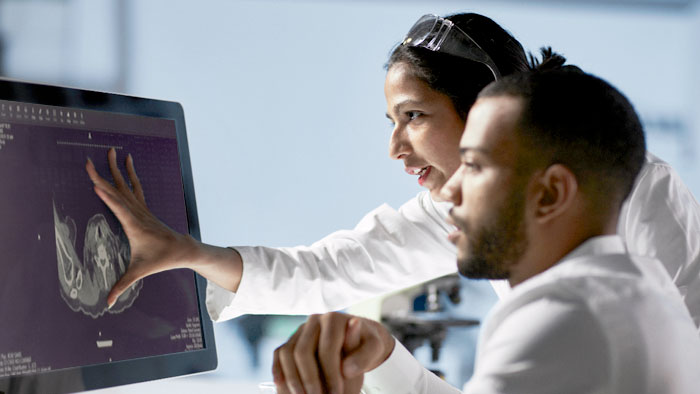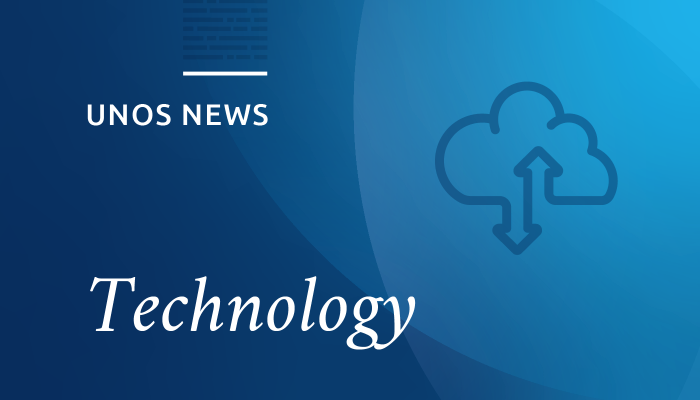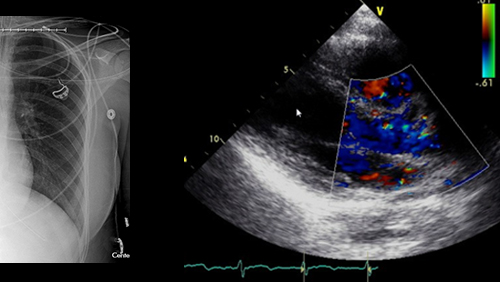In the spring, United Network for Organ Sharing will begin a phased release of UNetSM Image Sharing to organ procurement organizations, or OPOs, across the country. The first national hub for securely sharing high-quality medical imaging studies will subsequently be made available to ten OPOs each quarter through the summer of 2021.
UNet Image Sharing will provide a consistent, secure and seamless imaging application within DonorNet®, which UNet users will be able to access for sharing high-quality medical imaging studies like echocardiograms, MRIs and CT scans during organ allocation. The application has the potential to help users decrease the number of organs that are not used and increase the number of transplants performed nationwide. It will provide a consistent way for OPO and transplant hospital professionals from across the country to transfer information, thereby reducing errors in the imaging study sharing process and empowering health care providers to transplant more organs safely and efficiently.
“UNet Image Sharing will make the organ allocation process more secure and more convenient for members,” said service owner Randall Fenderson, who has been leading the application development process and piloting the new service with members for the past two years. “When the application is fully implemented, all OPO and transplant hospital professionals will have a consistent viewer through which to access high-quality medical imaging studies, thus providing users across the country with equitable access to the technology.”
Recently, Fenderson answered questions about the application that provides universal access to high-quality medical imaging studies during the organ offer process.
How does UNet Image Sharing offer an improvement upon previous imaging study sharing processes?
UNet Image Sharing maintains a consistent uploading and viewing experience for users without any of the vulnerabilities introduced by previous imaging study sharing methods. It seamlessly and securely integrates the functionality of an imaging study sharing service into the national transplant system, thus allowing transplant hospital professionals to send high-quality imaging studies directly to DonorNet and allowing OPO professionals to see who is viewing the studies, and when.
How did UNOS work with members to ensure that the application delivered what people wanted?
During the pilot phase, which ran from January to April 2019, we maintained a close feedback loop with the seven OPO representatives from across the country who were helping us test the application. We used those four months to determine functional needs, training and support that would be necessary to make UNet Image Sharing available nationwide. We also worked with transplant surgeons at the American Society of Transplant Surgeons Winter Symposium in February 2019 to gather their feedback on the application.
We listened closely to the pilot participants’ feedback, integrating useful features they requested into the final product. For example, transplant surgeons requested diagnostic tools such as zooming and scrolling, as well as a window-level tool that allows for plotting points at different parts of tissue to get a reading of how much fatty content is in the tissue. We made a lot of changes to the final application as a result of member feedback.
From a patient safety perspective, we wanted to ensure that OPO users would not accidentally associate the wrong imaging study to an individual donor. We configured the application to automatically check the metadata associated with the imaging study and verify it against a donor record. If the data doesn’t align, the user is now notified and required to take corrective action before sharing the imaging study.
How will imaging within DonorNet look to an end user?
We partnered with a medical imaging management vendor that had all of the tools necessary to store, view and share imaging studies during the organ allocation process. The vendor provides expertise at handling the files, so we didn’t re-invent the wheel there and instead focused on securely and seamlessly integrating UNet Image Sharing into DonorNet.
Users can access image studies just like other attachments within the application, except that imaging study displays in an image viewing tool that allows users in to interact with it. The image viewing tool has features that allow users to zoom, change image contrast, play the image study like a video and take measurements. It seamlessly and securely integrates functionality from the medical imaging management vendor into DonorNet, resulting in an experience in which the user never has to leave DonorNet to securely upload, view and share imaging studies from within the donor record.
We have been working for the past couple of years on making the interface extremely easy to navigate, so that users can easily upload, view and share imaging studies within DonorNet without getting lost in the process.
Why did UNOS decide to make imaging study sharing available within DonorNet?
We wanted to provide members with a consistent, secure, seamless and reliable platform from which to access imaging studies during the organ allocation process. We also wanted to build a platform that we could expand on in the future.
We plan to continuously improve UNet Image Sharing by offering things like mobile access and improved imaging study interpretation services from within the application. We also plan to eventually enable donor hospital users to send imaging studies directly to DonorNet from the diagnostic imaging machine that it is captured on and to add access to biopsy images through the platform.
Can you explain how the application was developed as a part of UNOS Labs?
We conducted the imaging study sharing pilot and development work as a UNOS Labs innovation effort. The work we conducted during the pilot served to prove that we could integrate an imaging platform into UNet. It also provided evidence that universal imaging study sharing functionality within UNet would be widely used and valued in the organ donation and transplantation community.
Through the work within UNOS Labs, we were able to make UNet Image Sharing available to authorized UNet users without increasing the Organ Procurement and Transplantation Network registration fee.
When will imaging study sharing within DonorNet be available to OPOs?
In April we will start rolling the functionality out to OPOs that do not already use it as part of the pilot program. We will release it in batches of approximately 10 OPOs per quarter after that.
We decided to take the phased rollout approach because we’ll be conducting training for the OPOs, as well as offering a training environment where users will be able to test drive the new functionality without affecting active donor records. This approach will help ensure that the transplant hospitals that the OPOs will likely be sharing the imaging studies with all know about the new way of accessing the imaging studies through DonorNet.
The phased approach will also help us manage the potential impact to our support personnel as new users engage with the application.
Interested in getting involved with future application developments at UNOS? Contact UNOS Customer Service at 800-978-4334 or email [email protected] to learn more about how to get involved.






